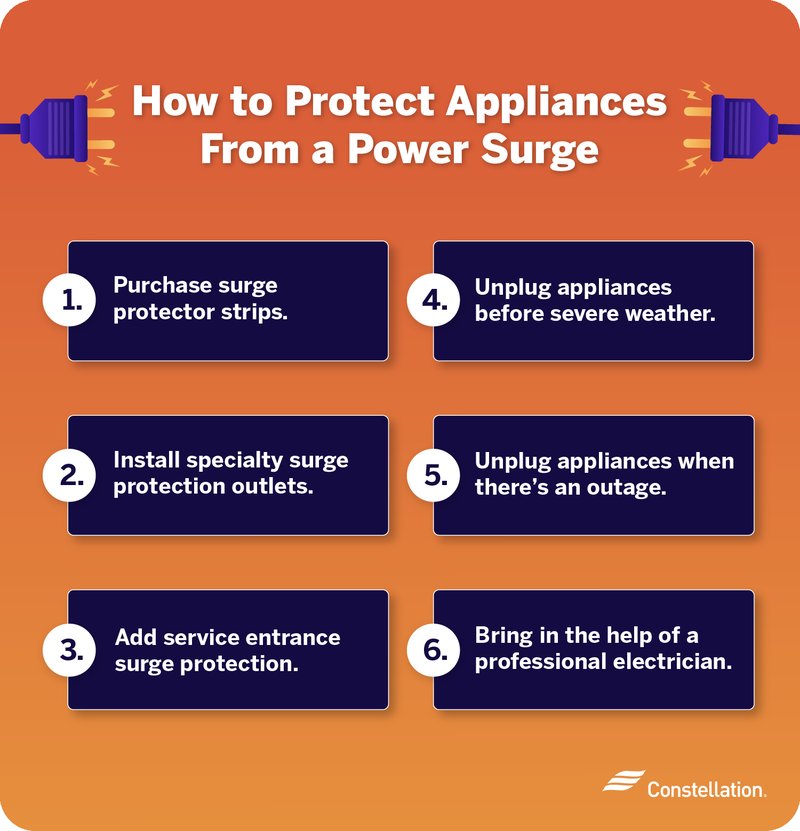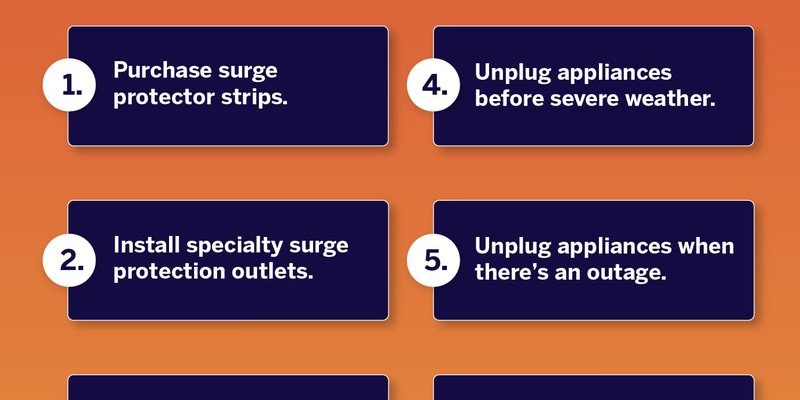
Power surges can be caused by various factors, including lightning strikes, problems from the power grid, or even the appliances themselves. Luckily, there are effective ways to shield your devices from these electrical tidal waves. So grab a cup of coffee, and let’s dive into the best strategies for protecting your appliances.
Understanding Power Surges
Power surges happen when there’s a sudden increase in voltage. Typically, the standard voltage for homes is around 120 volts. However, a surge can spike this to 1,000 volts or more, which is enough to fry sensitive electronics. The most common culprits behind these surges include lightning storms and issues with the local power grid. Even something as simple as turning a large appliance on or off can create a surge.
You might be wondering why this matters. Well, when power surges strike, they can damage the internal circuits of your devices, leading to costly repairs or replacements. Have you ever noticed your TV screen flickering during a storm? That’s a sign of possible surge activity. Understanding this phenomenon is the first step in preventing appliance damage.
Invest in Surge Protectors
One of the easiest and most effective ways to protect your appliances is by using surge protectors. Think of these as your appliances’ personal bodyguards—they help absorb excess voltage before it reaches your devices. A good surge protector can prevent significant damage and is an affordable investment.
When shopping for surge protectors, look for models with a higher joule rating. The higher the rating, the more energy it can absorb. For example, a surge protector with a 2,000 joule rating can handle more energy than one with just 600 joules. Keep in mind that not all power strips are surge protectors; make sure you’re purchasing the right type.
Plugging your valuable electronics—like your television, computer, or gaming console—into these protectors can save you a world of trouble. Honestly, every household should have at least one or two, especially in areas prone to electrical storms.
Install Whole-House Surge Protection
If you’re serious about protecting all your appliances, consider installing whole-house surge protection. This system works right at your electrical panel and guards against surges coming from outside your home. It acts as a first line of defense for everything connected to your home’s electrical system, including hardwired items like air conditioning units and water heaters.
While installing this system might require a licensed electrician, the peace of mind it offers is worth the investment. You’ll be protecting your entire house with a single device, rather than relying on individual surge protectors for each appliance.
Imagine this: you’re watching your favorite show during a thunderstorm, when suddenly, there’s a loud crack of lightning. Instead of panicking about your electronics, you can relax, knowing your whole-house surge protector has your back.
Unplug Devices During Storms
This may seem simple, but unplugging devices during storms is one of the safest ways to prevent damage from power surges. You’ve got to think of it as hitting the “pause” button on your electronics when bad weather rolls in. Sure, it might be a bit of a hassle, but it’s a surefire way to safeguard your appliances from unexpected spikes in voltage.
For instance, if a storm is on the horizon, spend a few minutes unplugging your valuable devices like televisions, computers, and game consoles. By doing so, you’re entirely cutting off their exposure to potential surges.
You might be thinking, “What’s the worst that could happen?” But trust me, a single lightning strike is all it takes to ruin your expensive electronics. So, if you know a storm is coming, be proactive.
Regular Maintenance of Electrical Systems
Keeping your home’s electrical system in good shape is crucial for preventing power surges. Just like you’d check the oil in your car or change the filters in your HVAC, your home’s electrical work needs regular attention.
Schedule periodic inspections with a qualified electrician. They’ll look for loose connections, frayed wires, or outdated panels that might contribute to surges. It might seem unexciting, but a little maintenance goes a long way.
If your area has experienced frequent surges, updating your electrical panel to one that can handle modern energy demands could also be beneficial. Remember, an ounce of prevention is worth a pound of cure—especially when it comes to your appliances.
Educate Family Members
Sometimes, protecting your appliances begins at home. Educating family members about the dangers of power surges is key. It’s one thing for you to know the risks, but getting everyone on the same page helps reinforce good habits.
Make it a household practice to unplug valuable devices during storms. You could even set up a fun checklist, turning it into a little game. This way, everyone gets involved when storm warnings show up on the weather app.
Plus, when kids understand that certain actions—like using multiple appliances at once—can lead to surges, they’ll be more mindful. It’s about creating an environment where everyone knows how to keep your home safe and your appliances running smoothly.
Power surges can feel like an unpredictable storm, ready to crash over your appliances at any moment. Luckily, with a few preventive strategies, you can shield your devices from these electrical intrusions. From investing in surge protectors to safely unplugging devices during storms, every step counts.
By understanding power surges, installing protection systems, and maintaining your electrical setup, you’ll ensure your appliances remain in tip-top shape. Next time the clouds roll in or you get a flicker in the lights, you can rest easy knowing you’ve got the right measures in place. After all, nothing beats the peace of mind that comes from taking proactive steps to protect your home.
